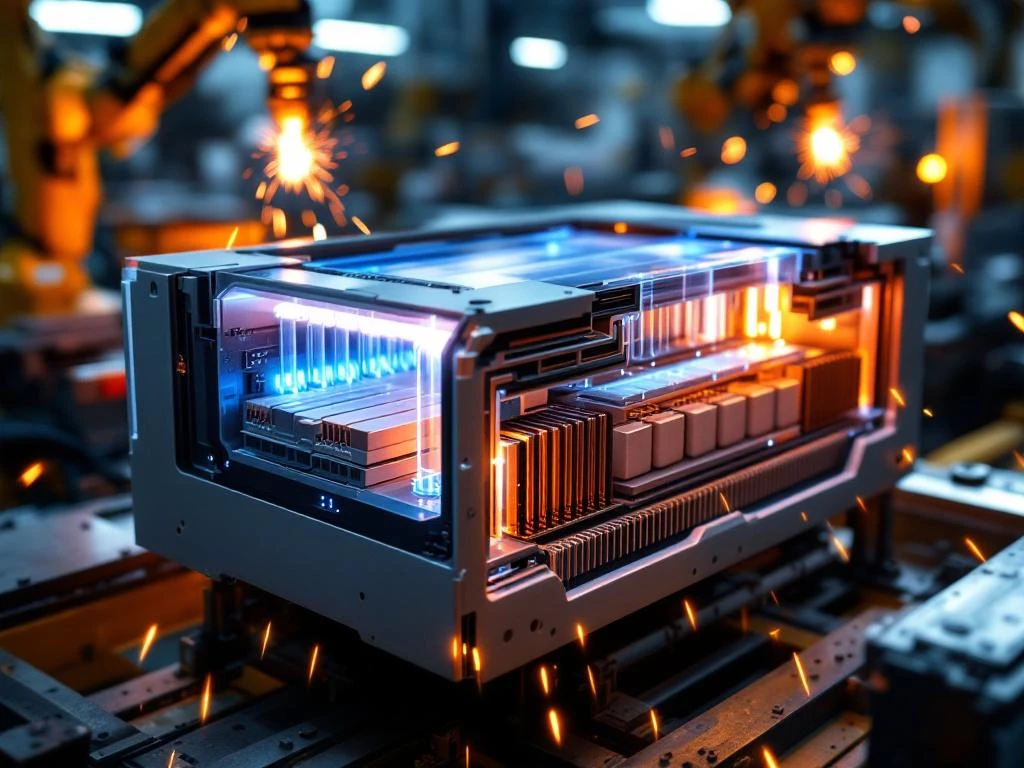Liquid-cooled systems are safer for high-power applications because they provide superior thermal management, preventing dangerous temperature spikes that can lead to thermal runaway. Unlike air-cooled alternatives, liquid cooling systems maintain precise temperature control, dissipate heat more efficiently, and ensure consistent performance even under extreme operating conditions, making them essential for racing applications, industrial equipment, and high-performance energy storage systems.
Understanding liquid cooling technology in high-power battery systems
Liquid cooling technology uses a circulating coolant to remove heat from battery cells more effectively than traditional air cooling methods. The system works by pumping a specially formulated coolant through channels or plates that make direct or indirect contact with battery cells, absorbing heat and transferring it to a heat exchanger where it dissipates into the environment.
In high-power applications, batteries generate substantial amounts of heat during charging and discharging cycles. This heat generation becomes particularly intense in racing environments or industrial applications where power density requirements are extreme. Traditional air cooling relies on fans and heat sinks to move air across battery surfaces, but this method has limited heat transfer capabilities.
Liquid cooling systems excel because liquids have much higher thermal conductivity than air. Water-based coolants can absorb and transfer heat approximately 25 times more effectively than air, making them indispensable for applications where battery temperature control is critical for both safety and performance.
What makes liquid-cooled systems safer than air-cooled alternatives?
Liquid-cooled battery systems offer superior safety through precise temperature control and rapid heat dissipation capabilities. The primary safety advantage lies in their ability to maintain uniform temperatures across all battery cells, preventing dangerous hot spots that can trigger thermal events.
Air-cooled systems struggle with temperature uniformity, especially in large battery packs. Cells positioned in the centre of a pack often run hotter than those on the edges, creating thermal imbalances that stress the battery system. Liquid cooling systems eliminate these hot spots by providing consistent cooling to every cell through direct thermal contact.
The rapid response time of liquid cooling systems also enhances safety. When a cell begins to overheat, liquid coolant can immediately absorb and redistribute that heat, preventing the temperature from reaching dangerous levels. This quick response is particularly crucial in racing applications where batteries experience sudden power demands and rapid temperature changes.
| Safety Feature | Liquid Cooling | Air Cooling |
|---|---|---|
| Temperature Uniformity | Excellent across all cells | Variable, hot spots common |
| Response Time | Immediate heat absorption | Slower heat dissipation |
| Thermal Runaway Prevention | Superior containment | Limited control capability |
How does liquid cooling prevent thermal runaway in battery packs?
Thermal runaway prevention is achieved through continuous heat extraction and temperature monitoring that keeps battery cells within safe operating ranges. Liquid cooling systems create a thermal barrier that prevents heat from one cell from affecting neighbouring cells, effectively containing potential thermal events.
Thermal runaway occurs when a battery cell’s temperature rises uncontrollably, causing chemical reactions that generate even more heat. This process can spread from cell to cell, potentially destroying an entire battery pack and creating serious safety hazards. In high-power applications, the risk increases due to higher current flows and rapid charge-discharge cycles.
Thermal management through liquid cooling works by maintaining each cell’s temperature below critical thresholds. The coolant continuously circulates, removing heat faster than it can accumulate. Advanced systems include temperature sensors throughout the pack that trigger increased cooling flow when temperatures approach warning levels.
The cooling system’s ability to isolate thermal events is equally important. If one cell does begin to overheat, the surrounding coolant absorbs that excess heat and prevents it from reaching adjacent cells, breaking the chain reaction that characterises thermal runaway scenarios.
What are the key components of a liquid cooling system?
Essential components include coolant pumps, heat exchangers, temperature sensors, distribution networks, and control systems that work together to maintain optimal battery temperatures. Each component plays a specific role in ensuring effective heat removal and system safety.
Coolant pumps provide the circulation force needed to move liquid through the entire system. These pumps must be reliable and capable of maintaining consistent flow rates even under varying temperature and pressure conditions. Pump failure can compromise the entire cooling system, making redundancy an important consideration in critical applications.
Heat exchangers serve as the interface between the cooling system and the external environment. They transfer heat from the warm coolant to ambient air or to a secondary cooling loop. The design and sizing of heat exchangers directly impact the system’s overall cooling capacity and efficiency.
Temperature sensors throughout the system provide real-time monitoring and feedback to control systems. These sensors detect temperature variations and trigger adjustments to coolant flow rates or pump speeds as needed. Advanced systems may include dozens of sensors to monitor individual cell temperatures and coolant temperatures at various points in the circuit.
Distribution networks consist of pipes, fittings, and cooling plates that direct coolant flow to where it’s needed most. Proper design ensures even coolant distribution and minimises pressure drops that could reduce cooling effectiveness.
Why do high-power applications require superior thermal management?
High-power applications generate heat at rates that exceed the capabilities of passive or air-based cooling systems, making active liquid cooling essential for safe operation. The relationship between power output and heat generation is exponential, meaning small increases in power demand create disproportionately large thermal management challenges.
Racing applications exemplify these extreme demands. Formula racing vehicles require instant power delivery and regenerative braking that can stress battery systems beyond normal operating parameters. Without adequate cooling, batteries would quickly overheat, leading to reduced performance, shortened lifespan, or safety incidents.
Industrial applications face similar challenges but often with additional complications such as high ambient temperatures or continuous operation cycles. Construction equipment operating in desert conditions, for example, must manage both internal heat generation and external heat loads that can exceed 50°C ambient temperature.
The consequences of inadequate cooling in these environments extend beyond simple performance reduction. Overheated batteries lose capacity permanently, require frequent replacement, and pose safety risks to operators and equipment. Industrial battery systems must maintain consistent performance to ensure operational reliability and worker safety.
How do liquid-cooled systems maintain consistent performance under extreme conditions?
Liquid cooling systems maintain performance through active temperature regulation that adapts to changing conditions and heat loads. Unlike passive cooling methods, liquid systems can increase cooling capacity on demand by adjusting flow rates and pump speeds based on real-time temperature feedback.
In high ambient temperature environments, liquid cooling systems can still maintain battery temperatures within optimal ranges by using larger heat exchangers or secondary cooling loops. This adaptability ensures that battery safety and performance remain consistent regardless of external conditions.
Continuous high-power cycling, common in racing and industrial applications, creates varying heat loads throughout operation. Liquid cooling systems respond dynamically to these changes, increasing cooling capacity during high-power phases and reducing energy consumption during lower-demand periods.
The thermal mass of liquid coolant also provides stability during rapid power changes. When sudden power demands create heat spikes, the coolant absorbs this heat without allowing battery temperatures to rise dangerously, then dissipates it gradually through the heat exchanger system.
Key takeaways for choosing liquid cooling in high-power battery applications
Liquid cooling becomes the optimal choice when applications demand high power density, operate in extreme conditions, or require maximum safety and reliability. The investment in liquid cooling technology pays dividends through improved battery life, consistent performance, and enhanced safety margins.
Implementation considerations include system complexity, maintenance requirements, and initial costs compared to air cooling alternatives. However, for applications where battery failure could result in significant downtime, safety risks, or performance penalties, liquid cooling provides essential protection that justifies the additional complexity.
The decision to implement liquid cooling should consider factors such as power requirements, operating environment, safety requirements, and total cost of ownership. Applications requiring continuous high-power output, operating in harsh environments, or where safety is paramount will benefit most from liquid cooling technology.
For organisations evaluating cooling systems for their high-power battery applications, consulting with specialists who understand the unique requirements of racing, industrial, and extreme-condition applications can help determine the optimal thermal management solution. If you’re considering liquid cooling for your specific application, we encourage you to contact our team to discuss your requirements and explore custom solutions.


